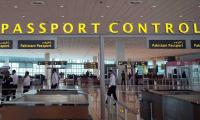The aftermath of the Panama case verdict is characterised by confusion on both sides – those on the side of embattled political parties, PML-N and PTI, and those on the side of the Supreme Court that redirected politics away from its chartered path. It is interesting to look at the emergent issues of litigation, the justiciability of the controversial clauses of Article 62 and Article 63 and certain procedural matters of judicature that demand explanation. It is clear from the political aftermath and the controversy surrounding the verdict that politics and law have become inextricably mixed up.
Is it a clash of institutions between parliament and the judiciary as indicated by the Senate Chairman Raza Rabbani, a clash between the civil and military wings of the state from behind the scenes as pointed out by Asma Jehangir or a clash between the letter and spirit of the constitution prior to the Eighth Amendment of 1985 and the controversial ‘moral’ clauses inserted in the two articles commanded by the military dictator Ziaul Haq as alleged by the civil society?
The transition from Nawaz Sharif to one of his lieutenants as prime minister has been remarkably smooth, given 221 votes for the latter on the floor of parliament. The JI’s four votes in a house of 342 votes points to the non-seriousness of that party as a player on the political stage. The party is cut off from even its own ally – the PTI – for the purpose of fielding a joint candidate for the premiership. Sirajul Haq’s insipid leadership lacks the capacity to connect with the voting public.
Sheikh Rashid once again opted to become the sacrificial lamb for the PTI, which avoided a loser’s profile for one of its top leaders. Imran Khan’s absence from the floor of the National Assembly on the day of voting for the leader of the house, where his candidate was certain to be defeated, betrayed the lack of sportsmanship. The PPP’s candidate Naveed Qamar stood at a higher pedestal in the counting match. The challenge to Imran’s moral credentials as a party leader came from a totally unexpected source: the PTI’s woman MNA Ayesha Gulalai.
Gulalai pointed to Imran Khan’s alleged moral turpitude in terms of his amorous dealings with female workers and cadres of the PTI. In retaliation, the party’s media cell and pro-Imran TV channels blasted her in a fierce vilification campaign on the electronic and social media. She and her father were accused of corruption, almost as a mirror-image of her accusations of corruption against Pervez Khattak. Her sister’s lifestyle was blown up as a scandal. This is fast becoming an unequal battle of nerves. On Imran’s side, there are the formidable organisational resources at work. On Gulalai’s side, no party – such as the PPP or the PML-N – or a leading women’s organisation, or indeed the women’s caucus in parliament took up her case, except for a reference to a parliamentary committee.
At one end, Gulalai has said that she will be ready to appear in court against Imran Khan for his alleged harassment. At the other end, elements in the KP government say that they can mobilise the traditional jirga system so that the Gulalai’s house is demolished in case she is unable to prove her case. This is a grim reminder of how, in a time of the modern state medieval methods are still employed. The two systems of justice confront each other: one is medieval, used by the side of the ‘modern’ leader Imran Khan; the other is ‘modern’ used by the side of Fata’s traditional lady. The quantum of damage to Imran Khan’s reputation for the 2018 elections can be formidable if other political parties, women NGOs and other civil society forums carry it forward. If the court case about the PTI funding from undisclosed sources abroad also goes against Imran Khan, the political cost for him can be formidable.
At the other end, the Sharifs are down but not out. The idea of a ‘proxy’ prime minister is sinking in the party ranks, even when the composition of the cabinet brought in new compromises. While the exercise for damage control among the PML-N leadership is on, the references filed in NAB continue to cast a grim shadow on the political system at large. Currently, there is no challenge to Nawaz Sharif’s leadership in the party. But a negative verdict of the NAB references can change the situation.
The PML-N’s political strategy is to stay away from street politics and maintain the status quo in the party and the government, especially in Punjab. That seems to be one of the reasons why Nawaz Sharif initially decided to avoid GT Road to travel to Lahore and limit himself to a show of strength after reaching there, but later gave way to party pressure. The politics of the disqualification of a prime minister enjoying the support of a majority in the National Assembly represents a crisis of institutional stability. The Supreme Court has effectively superseded the nation’s supreme representative body in terms of defining the constitution and applying it to specific cases of corruption. Not surprisingly, its verdict has been critically analysed.
Various questions have been highlighted that render the whole judicial approach controversial. First, why was the matter of Nawaz Sharif’s non-withdrawal of his salary from his son’s company not sent to NAB along with other cases and was instead considered suitable for disqualifying the chief executive of the country? Is there a disconnect between the means and the end since the verdict is understood as a technical knockout? Second, the supervision of the NAB process by a judge has been severely criticised because it could bring the court’s pressure on the side of the plaintiff.
Third, the reinstatement of two judges who had previously voted for disqualifying the PM – and thus had given their judgment already – onto the new bench only indicated that the nos would be heavier than the yeses. For example, in the three-judge bench that heard the case after receiving the JIT report, at least two judges were required to give a majority decision. But after expanding the bench back to five, only one judge could have produced a majority of three, with two judges already carrying their negative vote. The shift from a three-judge bench to the previous five-judge bench is totally incomprehensible and against the logic of numbers in the pursuit of justice. Whether the review petition will now be heard by a full court of 17 judges remains an open question.
Similarly, the use of the two constitutional provisions of Article 184 (3) and Article 62-1(F) has been under scrutiny. The former denied the right of appeal to Nawaz Sharif, which was not in the supreme interest of justice. Also, the higher judiciary more than ordinary mortals knew that the reason behind introducing changes in Article 62 and Article 63 in 1985 was to use it against political opponents. The court could have avoided making the relevant clause justiciable.
Morality is fast becoming a part of the Supreme Court’s professional kit through its reliance on the vigilante clauses of the constitution, accompanied by its institutional outreach beyond its traditional domain by overseeing the process of enquiry elsewhere. This can put a dent in the citadel of public life across the whole spectrum of leadership – from Nawaz Sharif to Imran Khan and beyond.
The writer is a professor at LUMS.
To take part in revolution, farmers need resources to afford seed varieties, fertilisers, and cost of setting up tube...
Pakistan remains burdened by insufficient financial support, saddled with conditions that deepen dependency
Government implements key policy decisions aimed at stabilising the economy
This is not going to be feel-good, year-end piece where I will use motivational quotes to tell how resilient we are
State Bank overlook considerable challenges surrounding Pakistan's economy
Pakistan remains mired in what can only be described as a ‘Baby Boomer Syndrome’







